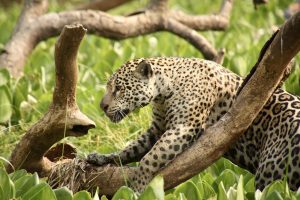 A couple of weeks before we left on this trip, we saw a documentary on the jaguars in the Pantanal in Brazil. These big cats (third biggest in the world) have been ‘with us’ since we drove into southern Mexico. However due to their dwindling numbers and secretive life style, seeing one in the wild is extremely difficult. In the documentary, we learned that there is one place in Brazil (Porto Jofre – Mato Grosso) where they are fairly often seen near a river. I immediately started investigating if we could somehow fit a visit to this place in our South American itinerary. The place is rather remote so it was going to take an effort and a lot of extra (about 4000) kilometers to get there Continue reading
A couple of weeks before we left on this trip, we saw a documentary on the jaguars in the Pantanal in Brazil. These big cats (third biggest in the world) have been ‘with us’ since we drove into southern Mexico. However due to their dwindling numbers and secretive life style, seeing one in the wild is extremely difficult. In the documentary, we learned that there is one place in Brazil (Porto Jofre – Mato Grosso) where they are fairly often seen near a river. I immediately started investigating if we could somehow fit a visit to this place in our South American itinerary. The place is rather remote so it was going to take an effort and a lot of extra (about 4000) kilometers to get there Continue reading
Author Archives: Caroline Messiaen
Bolivia – Part 2
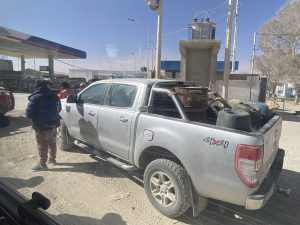 Our second attempt to get diesel in Bolivia is a completely different experience. We arrive and are immediately called over by a very ‘motivated’ employee and told to get in front of the long queue. There is one other guy who can skip the queue and he arrives with a pick-up truck full of barrels. To fill them he produces a dozen or so ID cards. He acts a bit like a mobster (or maybe politician). All the truckers come to shake his hand. And he tells us that he is the one who did us ‘the favour of getting diesel here. We think the employee did us the favor. We pay a price to her somewhere between the local and tourist price and know she pocketing the margin. Whatever it was, we are able to buy another 400 km worth of diesel and are ready for the second part of Bolivia. Continue reading
Our second attempt to get diesel in Bolivia is a completely different experience. We arrive and are immediately called over by a very ‘motivated’ employee and told to get in front of the long queue. There is one other guy who can skip the queue and he arrives with a pick-up truck full of barrels. To fill them he produces a dozen or so ID cards. He acts a bit like a mobster (or maybe politician). All the truckers come to shake his hand. And he tells us that he is the one who did us ‘the favour of getting diesel here. We think the employee did us the favor. We pay a price to her somewhere between the local and tourist price and know she pocketing the margin. Whatever it was, we are able to buy another 400 km worth of diesel and are ready for the second part of Bolivia. Continue reading
Bolivia – Part 1
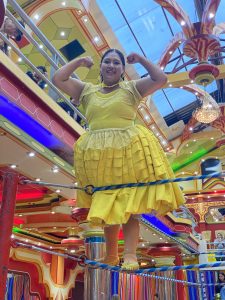 Diesel & Bolivia: it’s complicated! For years this combination has caused headaches for overlanders like us. The quality of diesel is notoriously bad and has caused plenty of mechanical problems for recent ‘clean Euro diesel’ vehicles. But that’s not all. It is often very difficult for foreigners to even get diesel at all. Foreigners have to pay a different price (non subsidized) and the administration for this “two price system’ is so cumbersome that many gas stations refuse to sell diesel to us. Having a jerrycan is essential in Bolivia . Because sometimes, these stations may want to fill the can to avoid the administration. Continue reading
Diesel & Bolivia: it’s complicated! For years this combination has caused headaches for overlanders like us. The quality of diesel is notoriously bad and has caused plenty of mechanical problems for recent ‘clean Euro diesel’ vehicles. But that’s not all. It is often very difficult for foreigners to even get diesel at all. Foreigners have to pay a different price (non subsidized) and the administration for this “two price system’ is so cumbersome that many gas stations refuse to sell diesel to us. Having a jerrycan is essential in Bolivia . Because sometimes, these stations may want to fill the can to avoid the administration. Continue reading
Peru: the south
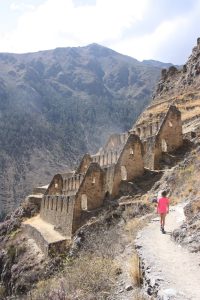 The two of us visited Peru back in 2014. It was one of our last trips without kids. Back then we did what is often refered to as the ‘Gringo trail’ from Lima to Cusco including all the most famous sites. When we get back in Lima this time we plan on doing some of the things we missed last time, because our flight was delayed, because we didn’t have the time or because the site was not discovered yet. Continue reading
The two of us visited Peru back in 2014. It was one of our last trips without kids. Back then we did what is often refered to as the ‘Gringo trail’ from Lima to Cusco including all the most famous sites. When we get back in Lima this time we plan on doing some of the things we missed last time, because our flight was delayed, because we didn’t have the time or because the site was not discovered yet. Continue reading
Peru: the north
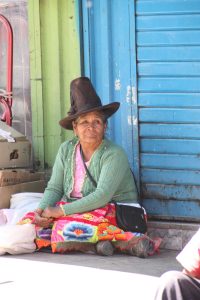 Driving into Peru was a bit of a shock. Literally 2m after passing the border (and for hundreds of kilometers along the coast after that) the sides of the roads were full of thrash. We had been warned that the North of Peru was dirty but we did not expect this. What made it very remarkable was that the roads in Ecuador had been extremely clean. Crazy how the mentality (or is it the policies) in two neighboring countries can differ this much. Continue reading
Driving into Peru was a bit of a shock. Literally 2m after passing the border (and for hundreds of kilometers along the coast after that) the sides of the roads were full of thrash. We had been warned that the North of Peru was dirty but we did not expect this. What made it very remarkable was that the roads in Ecuador had been extremely clean. Crazy how the mentality (or is it the policies) in two neighboring countries can differ this much. Continue reading
Ecuador
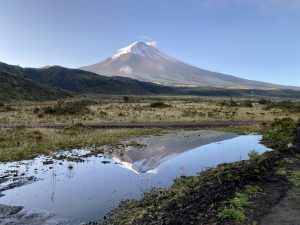 One morning in January, we are still in Mexico at the time, we wake up to find plenty of messages on our phones all with more or less the same message: “You are not planning to go to Ecuador, RIGHT?”….Euhm yes we are! We quickly google ‘Ecuador’ and immediately get what is going on. The president of Ecuador has announced ‘Decreto 111’ (aka ‘state of emergency’) after a steady rise in organized crime that has cumulated into a ‘take-over’ of the biggest prisons by criminals and a ‘hostage crisis’ live in the TV studio. In their usual style, international media, that never or hardly reported on the country for years, now confidently make the world believe that the gates of hell have opened in Ecuador. Even though we have no choice to drive around Ecuador, we are not really worried yet. We are still 6 months away from the country and this is an eternity in South America. There is however one annoying consequence of this situation for us. Continue reading
One morning in January, we are still in Mexico at the time, we wake up to find plenty of messages on our phones all with more or less the same message: “You are not planning to go to Ecuador, RIGHT?”….Euhm yes we are! We quickly google ‘Ecuador’ and immediately get what is going on. The president of Ecuador has announced ‘Decreto 111’ (aka ‘state of emergency’) after a steady rise in organized crime that has cumulated into a ‘take-over’ of the biggest prisons by criminals and a ‘hostage crisis’ live in the TV studio. In their usual style, international media, that never or hardly reported on the country for years, now confidently make the world believe that the gates of hell have opened in Ecuador. Even though we have no choice to drive around Ecuador, we are not really worried yet. We are still 6 months away from the country and this is an eternity in South America. There is however one annoying consequence of this situation for us. Continue reading
Colombia
 We have visited Colombia in 2011 and our original plan was to revisit some of our favourite parts. But due to all the shipping delays, we decided to drive straight to the parts of the country that we have not visited yet. So, as soon as we have our van back, we start driving in a straight line to Medellin. Continue reading
We have visited Colombia in 2011 and our original plan was to revisit some of our favourite parts. But due to all the shipping delays, we decided to drive straight to the parts of the country that we have not visited yet. So, as soon as we have our van back, we start driving in a straight line to Medellin. Continue reading
Shipping the Darien Gap
 In Panama we hit the biggest obstacle on the Pan American Highway: the Darien Gap. there is no road from Panama to Colombia. In the middle of the jungle the road abruptly ends. There isn’t a ferry either. So the only way to get from North to South America is to ship it. And that is a serious pain in the neck for all overlanders on the way to and from South America. Continue reading
In Panama we hit the biggest obstacle on the Pan American Highway: the Darien Gap. there is no road from Panama to Colombia. In the middle of the jungle the road abruptly ends. There isn’t a ferry either. So the only way to get from North to South America is to ship it. And that is a serious pain in the neck for all overlanders on the way to and from South America. Continue reading
Panama
 We spent three weeks in Panama but to be honest we did not see a lot of the country. A lot of the time was spent waiting until we were able to ship the van to Colombia. We will make a separate blog for that rather painful process. Also most of our time is spent at the few places that have a bit of elevation to escape the maddening heat and humidity. Continue reading
We spent three weeks in Panama but to be honest we did not see a lot of the country. A lot of the time was spent waiting until we were able to ship the van to Colombia. We will make a separate blog for that rather painful process. Also most of our time is spent at the few places that have a bit of elevation to escape the maddening heat and humidity. Continue reading
Costa Rica
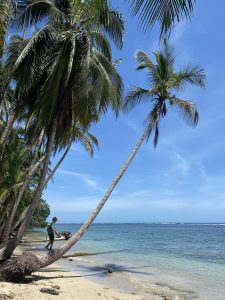 We had been in Costa Rica in 2019. It was our last ‘far away’(with flights) trip before we would have to pay the full price for the kids. We really loved all the nature and exotic animals so we had high expectations for this trip also. But it turned out that the ‘vanlife’ experience is a bit different than our previous visit… Continue reading
We had been in Costa Rica in 2019. It was our last ‘far away’(with flights) trip before we would have to pay the full price for the kids. We really loved all the nature and exotic animals so we had high expectations for this trip also. But it turned out that the ‘vanlife’ experience is a bit different than our previous visit… Continue reading
